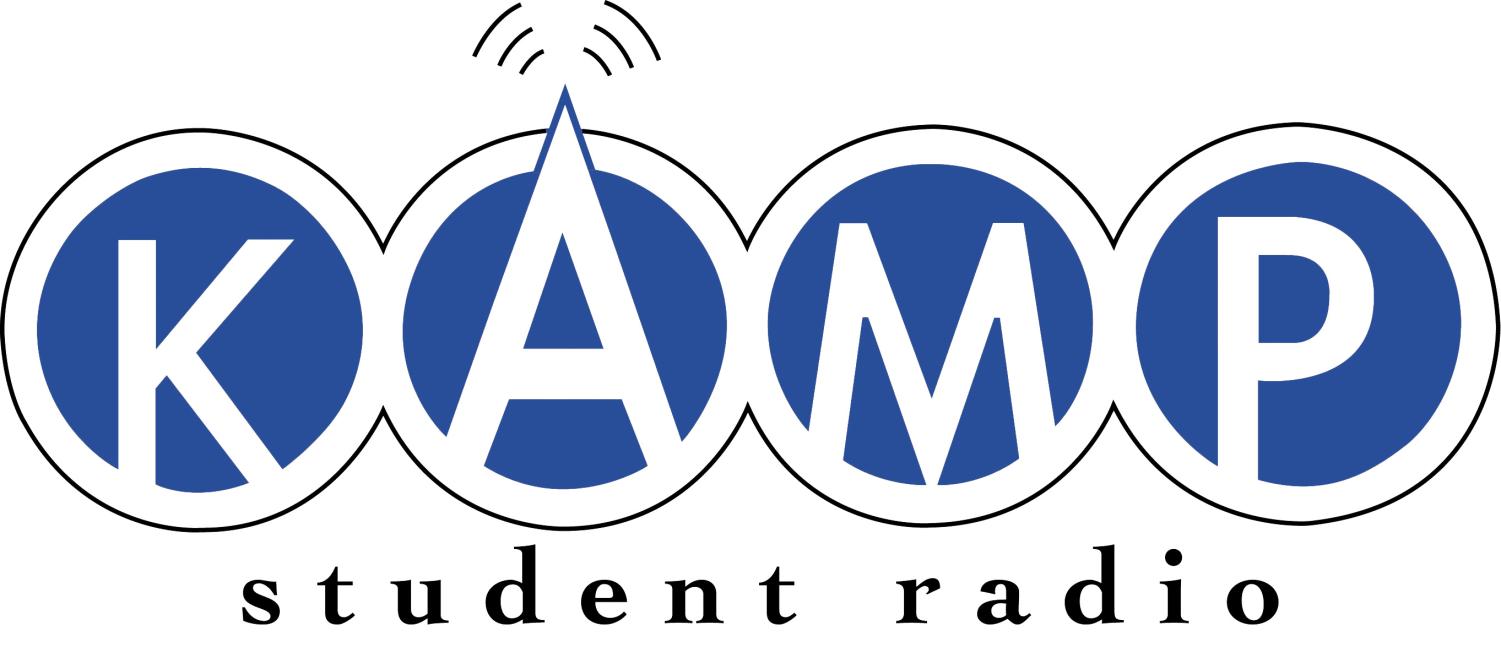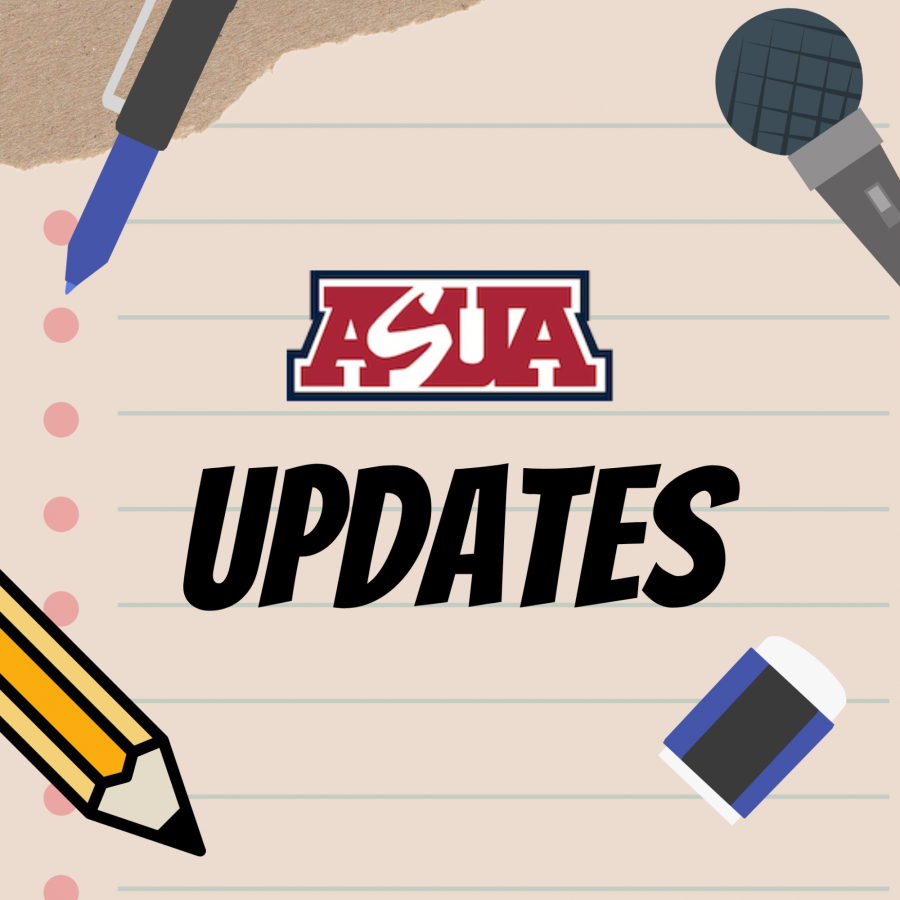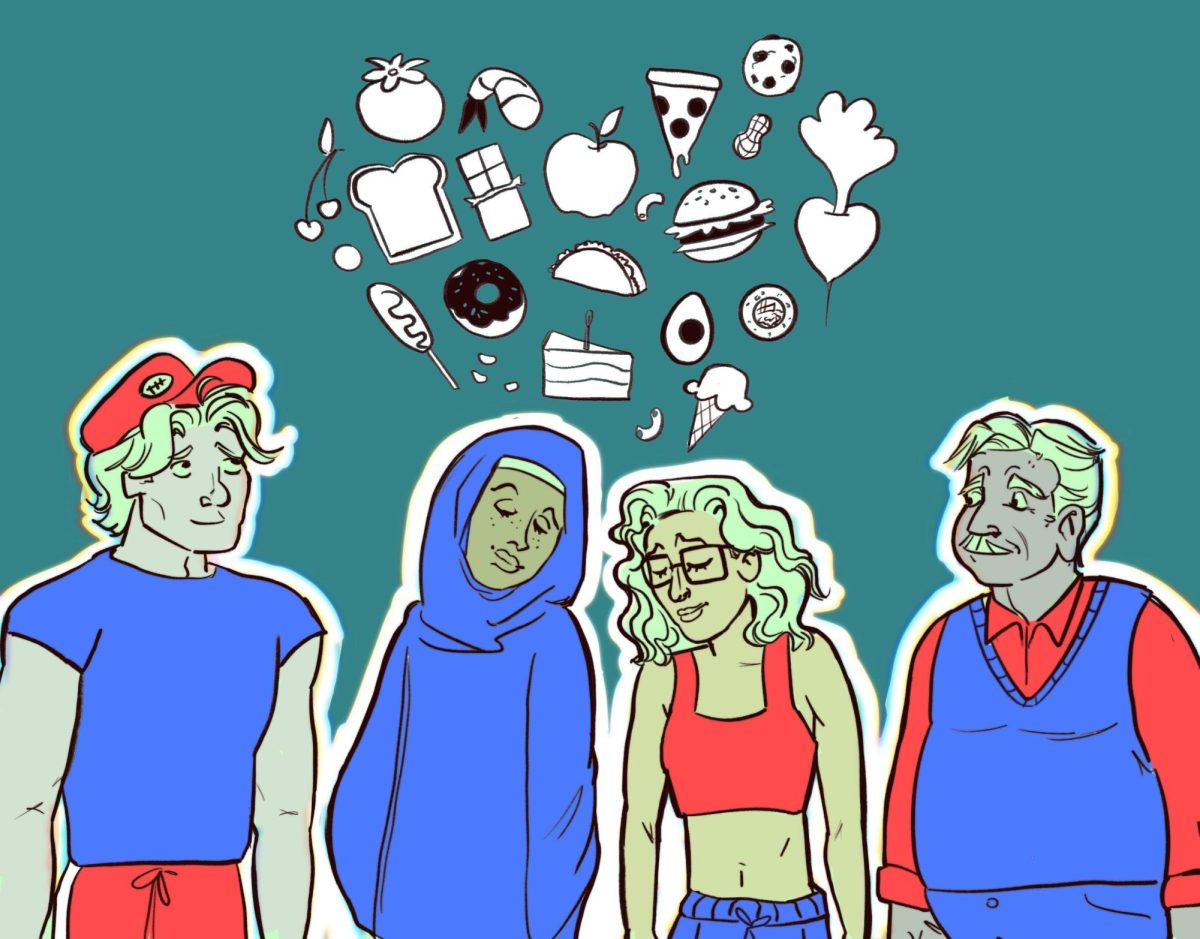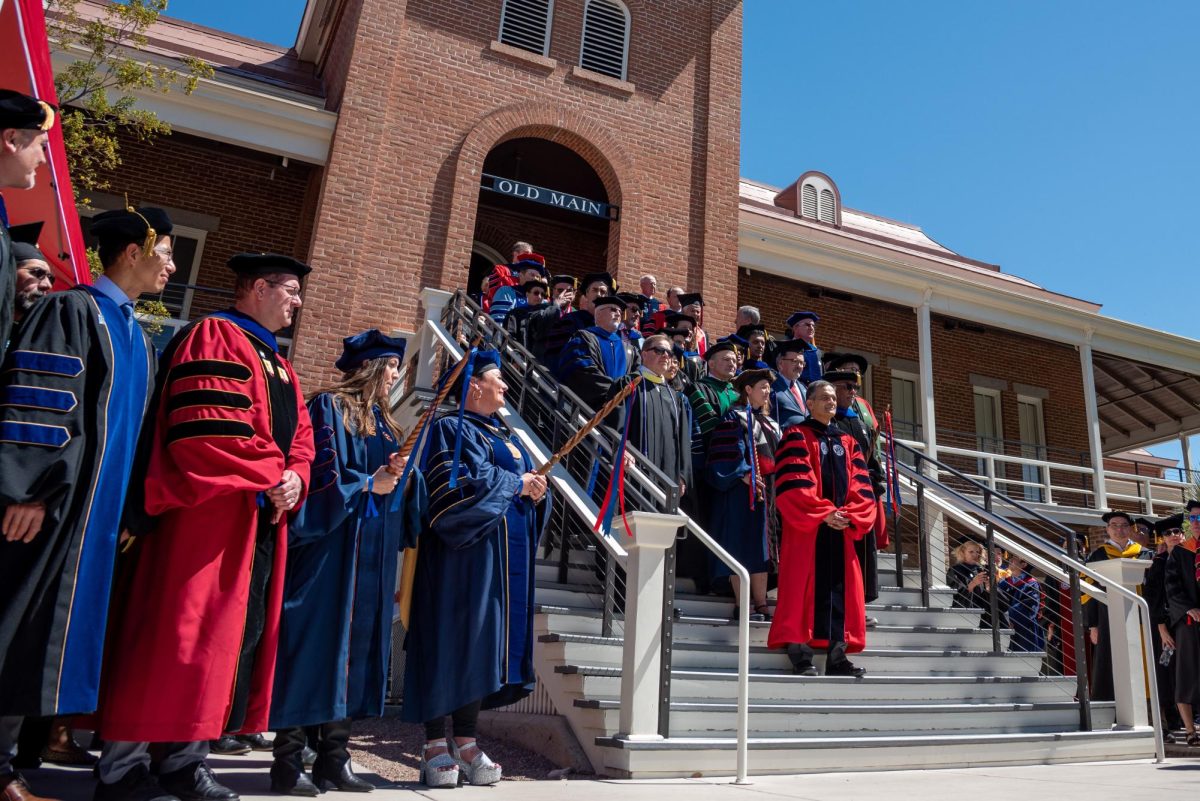Under Feb. 21’s turquoise blue sky, a group of students, teachers, staff and Tucson community members gathered on the University of Arizona Mall for a heartfelt celebration of the 25th anniversary of the United Nations Educational, Scientific and Cultural Organization’s International Mother Language Day.
“Today is a beautiful day because it’s the day we celebrate all the languages that we were either raised with or are part of our communities,” UA Ph.D. student in linguistics Zion Smith said.
Smith is a heritage learner and linguist of his tribe’s language, Chikashshanompa’ from the Chickasaw tribe of Oklahoma.
Every Feb. 21 since 2000, people have come together in events across the world to honor the earth’s linguistic and cultural diversity. Along with this celebration, these groups gather to propose and improve methods — such as education, visibility and community efforts — that promote, sustain and preserve our world’s languages.
Due to the efforts of the American Indian Language Development Institute (AILDI), this celebration of heritage languages across borders has occurred every Feb. 21 on the UA campus for over a decade.
The initiative of the American Indian Language Development Institute declared Feb. 21 as a celebration of heritage languages across borders.
“In our Mother Language Day event, we mostly focus on representing the Indigenous languages of these lands,” Regents’ professor of Tohono O’odham language and linguistics at the UA Ofelia Zepeda said. “But all languages are celebrated.”
Not far from the saguaro and organ pipe cacti of Joseph Wood Krutch Garden, AILDI’s Mother Languages’ Day tent displays white signs featuring the names of several UA buildings and school subjects written in the ancestral tongues of the tribes who have shaped the lands where the states of Arizona and Sonora, Mexico exist today.
Some signs, for instance, read the Hopi names “Natwanpi” for planting traditions and “Pootoylanki” for the knowledge of counting, the Tohono O’odham names “O’ohana Ki:” for the building of books or “Hu’u Ma:cig” for the knowledge of the stars and more.
“We had some of the tribes name some of the buildings on campus in their language and then we created signs that we would attach to the buildings for this Mother Languages’ Day,” Zepeda said. “We would add more and more signs every year but we would have to take them down and put them away at the end of the day.”
As time passed, students and university workers who spent time in their respective buildings’ offices began loving the idea of their building having an Indigenous name as well, Zepeda said.
“Thanks to this initiative that began on Mother Languages’ Day, we were able to make them permanent,” Zepeda said. “Some are already named, some will be soon, like Anthropology will be named next month.”

(Natasha Cortinovis)
In the speckle of shade provided by AILDI’s tent, students of various disciplines and languages and their O’odham, Diné, Yaqui and Hopi language educators conversed, leafed through books, dictionaries and flyers and engaged in several language games and quizzes. Among these activities were an O’odham words of animals’ search puzzle, an International Phonetic Alphabet brain puzzler, an Arizona’s language families and Indigenous languages’ general knowledge quiz.
“There’s unfortunately a very strong dominant monolingual culture in this country,” Matteo Pomilia, a master’s student in Native American Languages and Linguistics said. “But that’s why it’s important that young students realize that there’s many Indigenous languages and cultures in this area and around the world.”
Of the world’s living languages, 43% are deemed endangered and roughly 88 million speakers of languages are at risk of their language disappearing.
In its mission to preserve the Indigenous languages of America, the institute supports revitalization efforts across native communities by training their speakers to teach and document their language, including developing resources that serve to teach, learn and document the language through time.
“I am lucky that my tribe has a grammar book, a dictionary and a Rosetta Stone program online but some tribes don’t have these resources,” Smith said. “So here at AILDI we try to get native speakers of languages to come in and learn linguistics and language teaching so that they can create those resources for their community.”
The teaching and linguistics coaches at AILDI have worked with tribal speakers of several different languages, including Yuman, O’odham, Hopi, Diné, Chickasaw, Hualapai and Lakota.
The West Regional Native American Language Resource Center, located on the University of Arizona campus and working closely with AILDI, supports and advocates for the integration of Native American languages into all levels of education. It provides training and assistance for implementing language immersion instruction and offers consultation for existing tribal language programs in Arizona, California, Nevada and Utah.
“I’m here celebrating Mother Language Day as a member of the Hopi tribe and director of our West NALR Center,” UA professor in Indigenous language education Sheilah E. Nicholas said. “I see a lot of affirmation today that because we are still here, we are still going to be here in the future and many young people are making sure that this happens.”
Nicholas is also one of the faculty instructors at AILDI and loves working with Hopi language speakers who are teachers in the schools.
“All of us who have a heritage language are always learning, every day and that’s what matters,” Nicholas said.
According to Nicholas, the Hopi language has limited written resources. One of those resources is a 30,000 word Hopìikwa Lavàytutuveni, or Hopi Dictionary, put together by one of UA’s assistant professors in Anthropology, Emory Sekaquaptewa, who was a native speaker of Hopìikwa.

Among the books silently resting on the tables at AILDI’s Mother Language Day tent are Hualapai, Tohono O’odham and Nevome dictionaries; a Hopi, Navajo, O’odham and Yaqui tribal literature book called The South Corner of Time; a Western Apache Language and Culture book; Zepeda’s collection of O’odham/English poems mat hekid o ju [when it rains] and the only pedagogical textbook on the Tohono O’odham language ever composed.
One of the books on the other table is authored by professor Zepeda, which has been a teaching resource in all the classes of Tohono O’odham at the UA.
Her current class hosts 18 students. In Friday’s warm weather, some of these O’odham students take turns repeating a short sentence in the language that means “The O’odham language is beautiful.”
“It’s so rare to be able to be taught an Indigenous language at the college level in this way, and with a teacher who wrote the book that I use to learn,” Ph.D. student in linguistics, Brandon Gauthier, said. Gauthier is a current student in Zepeda’s Tohono O’odham class. “I’m lucky to have the opportunity.”
Other students on the UA campus feel fortunate to have the chance to learn their heritage language.
“There’s not many resources for native people to learn outside their families, so it’s really important that this school offers a Diné language program,” UA student of natural resources and Diné bizaad [Navajo] Cassandra Harris said. “My grandma, who was a fluent Diné speaker, passed and my mom didn’t learn it, so I’m taking the initiative to learn what I can and teach my sisters and siblings too.”
Harris is one of the first Navajo students who appeared at the tent around noon to salute her teacher and write with a light blue chalk the words “we are still here” in Diné and English on the grey asphalt of East University Boulevard.
Her teacher, Aresta Tsosie-Paddock, a citizen of the Navajo Nation and assistant professor of American Indian Studies, has been teaching Diné bizaad at the UA for several years.
Her current Diné class hosts approximately 30 students, most of them Navajo, with some who grew up off the reservation and lacked the opportunity to learn their heritage language.
“The Diné class offers Navajo students camaraderie and through the language, they nurture their identity, because language is so much part of who we are,” Tsosie-Paddock said. “I see that this kinship makes them feel like there’s a little bit of home here.”
Learning Diné also helps her students strengthen their relationships with their families, often through calls to ask them “How do you say this word in Diné?” or “What’s this?” Tsosie-Paddock said.
Tsosie-Paddock has also been trying to fortify this bridge between her students and their native communities through a mentorship-apprenticeship program that she founded 4 years ago.
Funded for its first 3 years by the Center for University Education Scholarship, and in its most recent year by the West NALR Center, the program pairs a fluent speaker of Diné with one to two Navajo students who are learning the language for one to two weekly language meetings over Zoom.
Since West NALRC has taken over its funding, the program has now extended to the Tohono O’odham and White Mountain Apache tribes.
There are approximately six to seven mentors for both the Diné and the O’odham languages and one White Mountain Apache mentor. Each mentor teaches their respective UA native students whether they are on or off the reservations. There are mentors in Albuquerque, Farmington and Phoenix, among other locations.
The West NALRC supports the mentors with a computer and reliable internet connection. The students maintain a diary of the things they did, talked about and learned.
“It’s such a good program, not only because it helps students advance their language skills but also because they gain a deeper cultural knowledge,” Tsosie-Paddock said. “They learn a lot about oral histories from their mentors and then they will be carrying on those origin stories embedded in the culture of our native tribes.”
“I’ve been working with the O’odham Ňi’okĭ Ki: [Tohono O’odham Language Center] that opened in November on the reservation to find fluent speakers of O’odham who are interested in sharing their language and culture with students,” Zepeda said. “The mentors are community members, sometimes elders.”
Both the O’odham and the Navajo teachers are excited about the continuation of this program, they said.
While several colorful children’s Hopi and Apache folktale books lie still in the booth’s shade, like guardians of ancient stories, people continue to stop by to write words and sentences in several different languages on the warm ground under the midday sun.
There’s even a sentence in Mongolian.
And one in Yoem Noki [Yaqui].
“We also want to honor our language by coming to this Mother Language Day event at the U of A,” a teacher on the Pascua Yaqui reservation and learner of Yoem Noki, María Louisa Vega, said. “We are also here to learn from other tribes’ revitalization efforts, to keep the language alive and my mission is to do just that.”
Smith said that there is importance in nurturing one’s heritage language with every passing sunrise.
“To lose a language is a tragedy,” Smith said. “So If you have a mother language, I urge you to use it and to cherish it.”
Follow the Daily Wildcat on Instagram and Twitter/X








